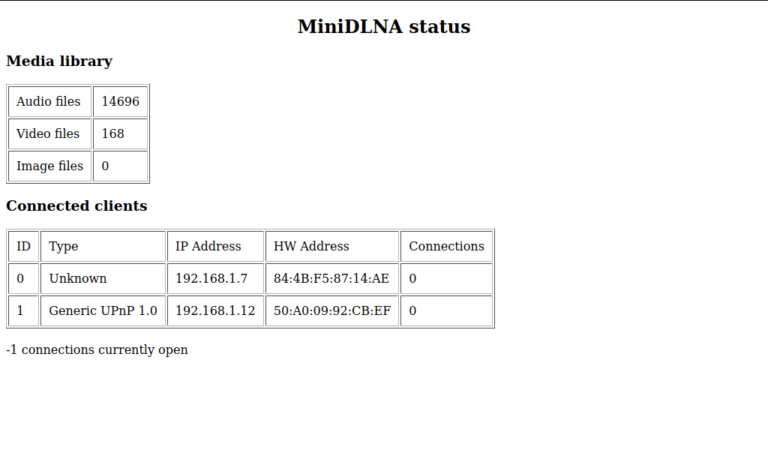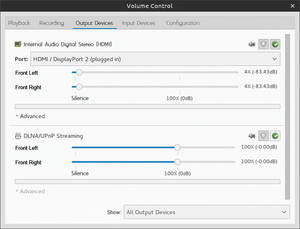
Control points can then distinguish different media renderer in upnp messages. If you have more than one raspi with gmediarender running on your network, you should give each a different UUID. Seems gmediarender still does not understand UTF-8 :-( Don't use "special" characters like umlaut or so. If it works then configure /etc/default/gmediarender, set UPNP_DEVICE_NAME and the INITIAL_VOLUME_DB if you like. So a complete test call on my Buster Desktop installation looks like this: OPENSSL_CONF="" /usr/bin/gmediarender -friendly-name Test -uuid 42 -gstout-initial-volume-db -20 -logfile /dev/stdout -gstout-audiosink alsasink With some googling I found that it isn't critical (3) and you can suppress it by setting an empty string to OPENSSL_CONF="". I also found a confusing warning: ** (gmediarender:4222): CRITICAL **: 11:38:55.673: file gstdtlsagent.c: line 192 (gst_dtls_agent_init): should not be reached

I had to append -gstout-audiosink alsasink to the test call shown above. It seems that the Desktop version installs some more additional libraries that confuse gmediarender what output to use. This works on Raspbian Buster Light but on Raspbian Buster With Desktop the debug output on the screen shows that everything should do, but there was no sound to hear. Select it and play music from your media server if you have one. On your control point (bubbleUPNP or something like this) you should find a renderer named Test. pi ~$ /usr/bin/gmediarender -friendly-name Test -uuid 42 -gstout-initial-volume-db -20 -logfile /dev/stdout Running the test: be sure that you are member of the groups audio and video.

If you hear that it's working then install gmediarender with needed plugins: pi ~$ sudo apt install gstreamer1.0-alsa gstreamer1.0-plugins-base gstreamer1.0-plugins-good gstreamer1.0-plugins-ugly gstreamer1.0-plugins-bad gstreamer1.0-gl gmediarender Of course you can take any other audio output test. First you can check your audio output with this small audio file working.wav.

With the raspi you should be connected to your local network and to your audio output (earphone, amplifier etc). To get it together with other components you can have a look at Howto install UPnP/DLNA multiroom media environment. Updates done with sudo apt update & sudo apt full-upgrade & sudo reboot.


 0 kommentar(er)
0 kommentar(er)
